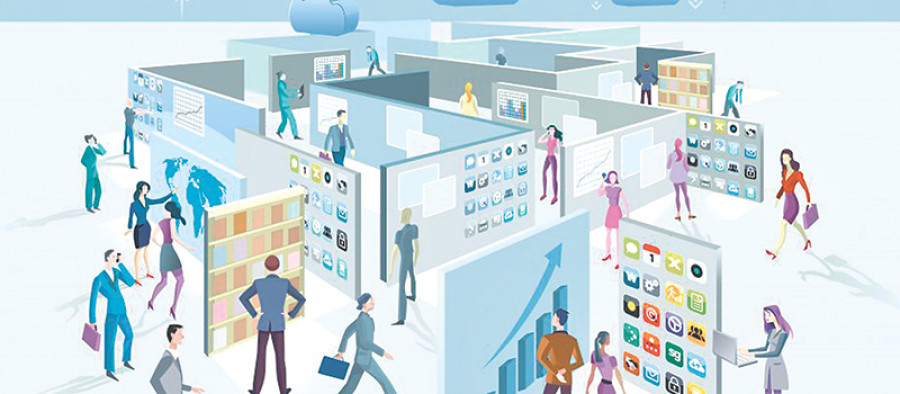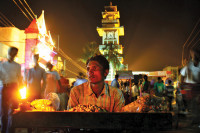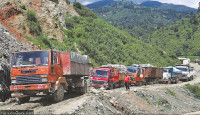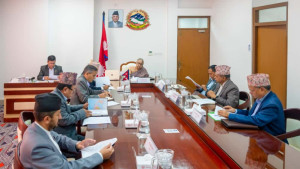Wed, Nov 5, 2025
Opinion
Well connected
An advanced digital network and sustainable transport will change the society for the better
bookmark
Manish Pokharel & Bimal Pratap Shah
Published at : September 13, 2018
Updated at : September 13, 2018 09:30
The second people’s movement of the 1990s brought an end to the Panchayat System paving the way for the multiparty democracy in Nepal. Around the same time, Estonia, a tiny country in Europe, gained independence from the mighty Soviet Union. In less than three decades after independence, Estonia has successfully established itself as one of the most advanced digital democracies in the world. It has built a digital society through an e-governnace system that provides public services online. Nepal, on the other hand, still remains one of the least developed countries in the world where digitisation has not yet taken pace. Now, the highly digitised Baltic democracy is making all public transportation in the country free. One should always get inspired by good examples and to that end, Nepal too could adopt the development model followed by Estonia.
Digital transformation
After the independence in 1991, Estonia made digital transformation their number one priority. Now, everything and everyone in Estonia is connected to the internet. According to a survey conducted in 2017, around 90 percent of Estonians use the internet. The country was recently ranked 16th out of 191 countries in the Global E-government Survey 2018 Report launched recently by the United Nations Department of Economic and Social Affairs. Denmark topped the Index followed by Australia, Republic of Korea, United Kingdom, and Sweden. Nepal stood at the 117th position.
Nepal’s ranking does not match up to Estonia’s impressive standing, but the Himalayan nation’s ranking has improved significantly from 2014 where it was placed in the 165th position. Bangladesh ranks top among least developed countries (LDCs) followed by Nepal, Rwanda, Bhutan Zambia, Uganda, Vanuatu, Togo, United Republic of Tanzania and Timor-Leste. Bangladesh has been serious about digital transformation for quite some time.
The findings of this year’s E-government survey show Nepal has not been able to emulate Estonia’s progress, but it seems, the country is still progressing nevertheless; albeit at a snail’s pace. However, Nepali people are still required to deal with the non-responsive, overly bloated, and chaotic bureaucracy. For now, it is impossible to receive hassle-free government services without any political and bureaucratic connections or getting help from the middlemen. In short, Nepali citizens are yet to feel the real benefit of online government services.
Besides the terrible experience in the government agencies, the citizenry also has to go through a horrible experience while using the public transportations. Public transport plays a key role in moving the urban population in a big city like Kathmandu. An efficient public transport system is the backbone of urban transport. Also, a good public transport system is supposed to make efficient use of urban space and provide affordable and well organised mobility. Yet, in most part of the world, cars are priorotised over public transportation. The remaining portion of the transport infrastructure is then allocated to buses, which is the main reason behind modern-day city’s chaotic traffic.
Organised public transport
In a developing country like Nepal, there are far fewer buses running in the cities than the actual requirement. In India, the total number of buses available for transporting general people is less than one-tenth of the requirement. According to a recent data published by the Government of India, 30 lakh busses are required for general passengers in India, but there are only about 19 lakh buses running in the country.
Nepal is also facing similar problems. Despite the massive rise in Kathmandu’s population, public vehicles are still far fewer in number not enough to comfortably transport the capital city’s urban dwellers. Furthermore, the public vehicles do not have well-defined schedules, are generally poorly maintained, overcrowded, and extremely uncomfortable.
Estonia, on the other hand, has a much organised public transport system. Now, it is upping the ante by making buses free of cost all over the country. In 2013, all public transit in its capital city became free to local residents. This year, a new national free-ride scheme extends this model even further, making all state-run bus that travels to rural municipalities free and extending cost-free transit out from the capital into other regions. Now, it is possible for every county in Estonia to implement free public transport for its residents, 24 hours a day.
There is no reason why Nepal cant learn a thing or two from Estonia. First, it can aim to be a 100 percent digital country by 2023 and deliver effective online government services on smart-phones. Second, it can make public transport free in Kathmandu. Third, the government can add 20,000 buses in Kathmandu and ban all cars, especially the ones guzzling fossil fuels. Until and unless Nepali people get hassle-free government service delivery over the Internet and free public transportation, our dream of becoming an advanced democracy will remain a pipedream.
Professor Pokharel is Head of the Department of Computer Science and Engineering at Kathmandu University; Shah is the co-author of ‘Strategic IT Planning for Public Organizations: A Toolkit’.
Editor's Picks
E-PAPER | November 05, 2025
×




 18.12°C Kathmandu
18.12°C Kathmandu










